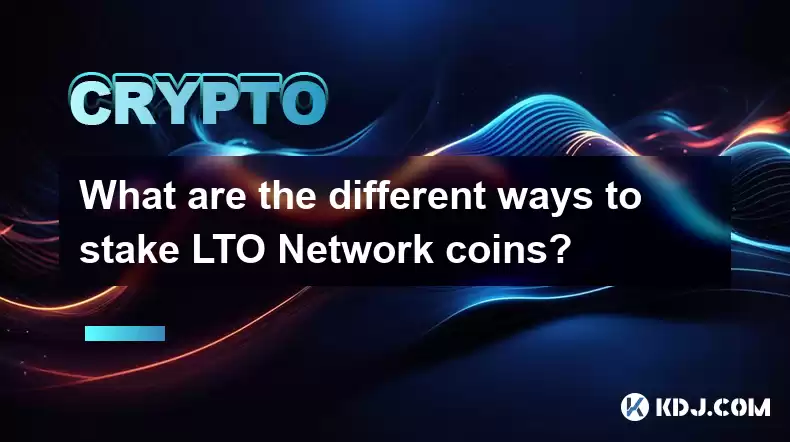-
 Bitcoin
Bitcoin $118600
0.36% -
 Ethereum
Ethereum $3855
1.06% -
 XRP
XRP $3.195
-0.09% -
 Tether USDt
Tether USDt $1.000
-0.04% -
 BNB
BNB $844.5
6.23% -
 Solana
Solana $191.3
2.83% -
 USDC
USDC $0.9997
-0.01% -
 Dogecoin
Dogecoin $0.2376
0.10% -
 TRON
TRON $0.3242
0.83% -
 Cardano
Cardano $0.8222
0.13% -
 Hyperliquid
Hyperliquid $45.26
6.53% -
 Sui
Sui $4.200
-2.56% -
 Stellar
Stellar $0.4336
-1.24% -
 Chainlink
Chainlink $18.86
0.28% -
 Hedera
Hedera $0.2796
-1.75% -
 Bitcoin Cash
Bitcoin Cash $583.3
-1.84% -
 Avalanche
Avalanche $27.06
8.09% -
 Litecoin
Litecoin $112.3
-1.16% -
 Toncoin
Toncoin $3.353
0.58% -
 UNUS SED LEO
UNUS SED LEO $8.968
-0.11% -
 Shiba Inu
Shiba Inu $0.00001395
-0.54% -
 Ethena USDe
Ethena USDe $1.001
-0.03% -
 Uniswap
Uniswap $10.76
0.69% -
 Polkadot
Polkadot $4.175
0.26% -
 Monero
Monero $326.7
1.07% -
 Bitget Token
Bitget Token $4.665
1.61% -
 Dai
Dai $0.9998
-0.02% -
 Pepe
Pepe $0.00001271
0.32% -
 Cronos
Cronos $0.1416
2.01% -
 Aave
Aave $299.3
1.15%
What are the different ways to stake LTO Network coins?
Unstaking LTO Network coins requires a minimum of two confirmations and a waiting period determined by the staking platform.
Dec 31, 2024 at 09:23 am

Key Points:
- Unstaking LTO Network coins requires a minimum of two confirmations.
- The staking period is flexible, and users can customize it according to their preferences.
- Staking rewards are distributed in the form of LTO tokens.
How to Stake LTO Network Coins:
1. Set up a LTO wallet and acquire LTO coins.
- Create a LTO wallet using a reputable provider, such as the LTO Network Wallet or Argent Wallet.
- Once the wallet is set up, purchase LTO coins on a cryptocurrency exchange, such as Binance or Coinbase.
2. Choose a staking platform.
- Select a staking platform that offers LTO Network staking, such as MyLTO, Everstake, or Figment.
- Visit the platform's website and create an account.
3. Connect your LTO wallet to the staking platform.
- Click on the "Connect Wallet" button on the staking platform's website.
- Select your LTO wallet provider and follow the instructions to connect your wallet.
4. Select a validator node.
- The staking platform will provide you with a list of available validator nodes.
- Choose a validator node that has a good track record of performance and reliability.
5. Set your staking amount and duration.
- Specify the number of LTO tokens you want to stake.
- Set the duration of the staking period. The staking period can be flexible, ranging from one month to three years.
- Enter your wallet address where you want to receive the staking rewards. The rewards are generally distributed weekly or monthly.
How to Unstake LTO Network Coins:
1. Initiating unstaking
- Navigate to the relevant staking platform and sign in to your account.
- Select the LTO staking option and find the specific stake you want to unstake.
- Click on the "Unstake" button associated with that stake.
2. Withdrawal period
- Once the unstaking process has been initiated, there is a waiting or withdrawal period before you can access your unstaked LTO tokens. This period typically lasts for a few hours or sometimes up to a few days.
3. Confirming the transaction
- After the withdrawal period has elapsed, you will need to confirm the transaction to complete the unstaking process.
- This often involves signing a message in your LTO wallet or providing your private key.
4. Contacting the validator
- In certain situations when the unstaking process encounters issues, you may need to contact the validator directly.
- Validators are responsible for the technical aspects of the staking process and can provide assistance if necessary.
FAQs:
Can I stake LTO coins from any exchange or wallet?
- Staking LTO coins directly from an exchange is generally not recommended. Exchanges may not offer the same level of security and control over your LTO tokens as a dedicated staking platform.
What is the minimum staking amount for LTO Network coins?
- The minimum staking amount for LTO Network coins typically varies depending on the staking platform. However, it is generally set at a relatively low amount to make staking accessible to a wide range of users.
How can I choose a reliable validator node?
- Consider factors such as the node's performance history, reputation in the community, and the size of its stake. Additionally, you can research the node's technical infrastructure to ensure it meets your reliability requirements.
Disclaimer:info@kdj.com
The information provided is not trading advice. kdj.com does not assume any responsibility for any investments made based on the information provided in this article. Cryptocurrencies are highly volatile and it is highly recommended that you invest with caution after thorough research!
If you believe that the content used on this website infringes your copyright, please contact us immediately (info@kdj.com) and we will delete it promptly.
- Tinubu's Grand Gesture: Super Falcons Soar with Rewards and Recognition
- 2025-07-29 02:30:12
- Rare Coin Sells for £180,000 at Auction: A Glimpse into Numismatic Treasures
- 2025-07-29 02:30:12
- Pepe Dollar vs. Bitcoin HYPER: The Crypto Supercycle Meme Showdown
- 2025-07-29 01:10:12
- BlockDAG, BNB, DOGE: The New York Minute on 2025's Crypto Frontrunners
- 2025-07-29 01:50:12
- AVAX, Solana, and the AI Token Surge: What's Hot and What's Not
- 2025-07-29 01:50:12
- XRP Price Surge Potential: Chart Analysis and What's Next
- 2025-07-29 01:55:48
Related knowledge

What is Chainlink (LINK)?
Jul 22,2025 at 02:14am
Understanding Chainlink (LINK): The Decentralized Oracle NetworkChainlink is a decentralized oracle network designed to bridge the gap between blockch...

What is Avalanche (AVAX)?
Jul 22,2025 at 08:35am
What is Avalanche (AVAX)?Avalanche (AVAX) is a decentralized, open-source blockchain platform designed to support high-performance decentralized appli...

What is Polkadot (DOT)?
Jul 19,2025 at 06:35pm
Understanding the Basics of Polkadot (DOT)Polkadot (DOT) is a multi-chain network protocol designed to enable different blockchains to transfer messag...

What is Litecoin (LTC)?
Jul 23,2025 at 11:35am
Overview of Litecoin (LTC)Litecoin (LTC) is a peer-to-peer cryptocurrency that was created in 2011 by Charlie Lee, a former Google engineer. It is oft...

What is Monero (XMR)?
Jul 21,2025 at 10:07am
What is Monero (XMR)?Monero (XMR) is a decentralized cryptocurrency designed to provide enhanced privacy and anonymity for its users. Unlike Bitcoin a...

How to add indicators to Ethereum chart on TradingView?
Jul 19,2025 at 07:15am
What Is an Ethereum Chart on TradingView?The Ethereum chart on TradingView is a visual representation of the price movement of Ethereum (ETH) over a s...

What is Chainlink (LINK)?
Jul 22,2025 at 02:14am
Understanding Chainlink (LINK): The Decentralized Oracle NetworkChainlink is a decentralized oracle network designed to bridge the gap between blockch...

What is Avalanche (AVAX)?
Jul 22,2025 at 08:35am
What is Avalanche (AVAX)?Avalanche (AVAX) is a decentralized, open-source blockchain platform designed to support high-performance decentralized appli...

What is Polkadot (DOT)?
Jul 19,2025 at 06:35pm
Understanding the Basics of Polkadot (DOT)Polkadot (DOT) is a multi-chain network protocol designed to enable different blockchains to transfer messag...

What is Litecoin (LTC)?
Jul 23,2025 at 11:35am
Overview of Litecoin (LTC)Litecoin (LTC) is a peer-to-peer cryptocurrency that was created in 2011 by Charlie Lee, a former Google engineer. It is oft...

What is Monero (XMR)?
Jul 21,2025 at 10:07am
What is Monero (XMR)?Monero (XMR) is a decentralized cryptocurrency designed to provide enhanced privacy and anonymity for its users. Unlike Bitcoin a...

How to add indicators to Ethereum chart on TradingView?
Jul 19,2025 at 07:15am
What Is an Ethereum Chart on TradingView?The Ethereum chart on TradingView is a visual representation of the price movement of Ethereum (ETH) over a s...
See all articles

























































































